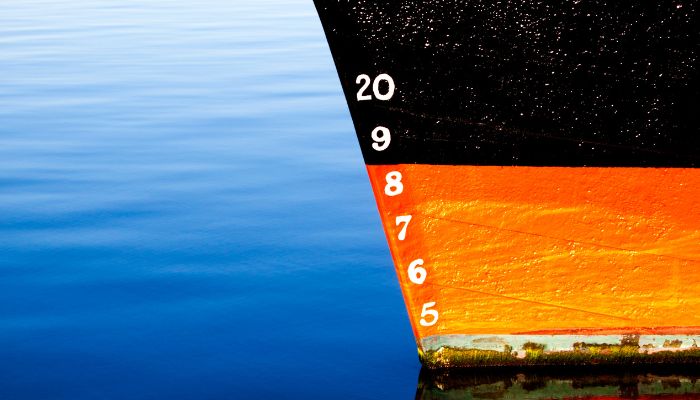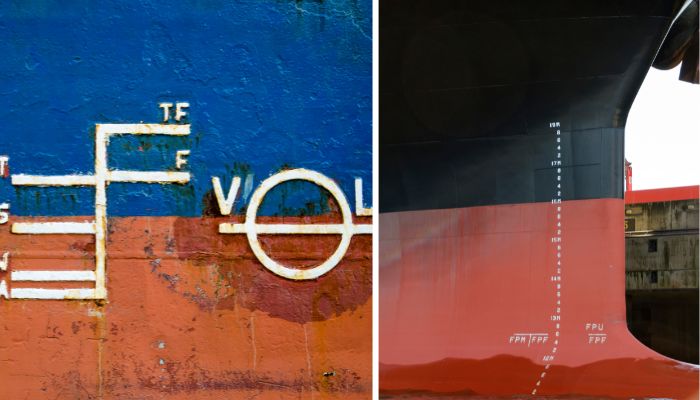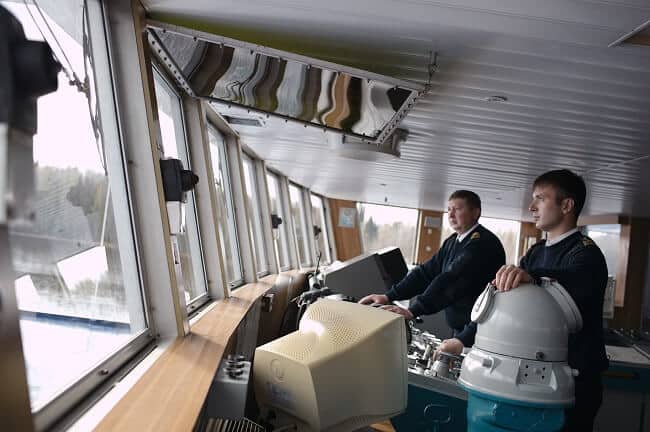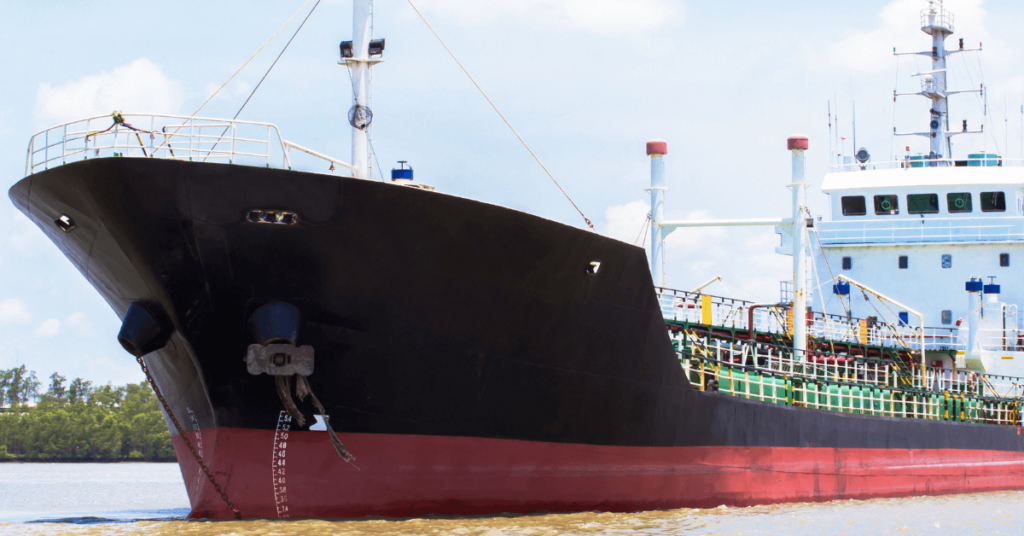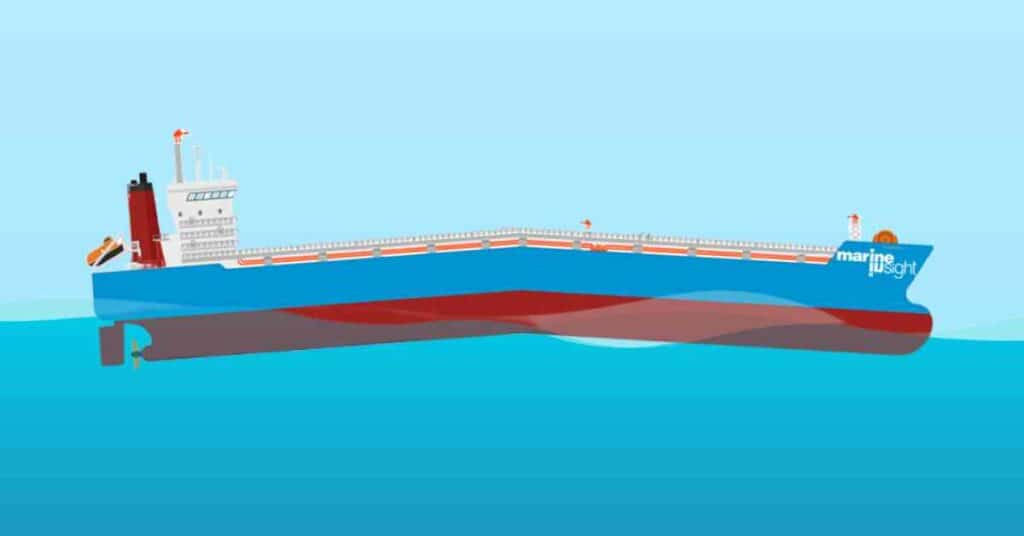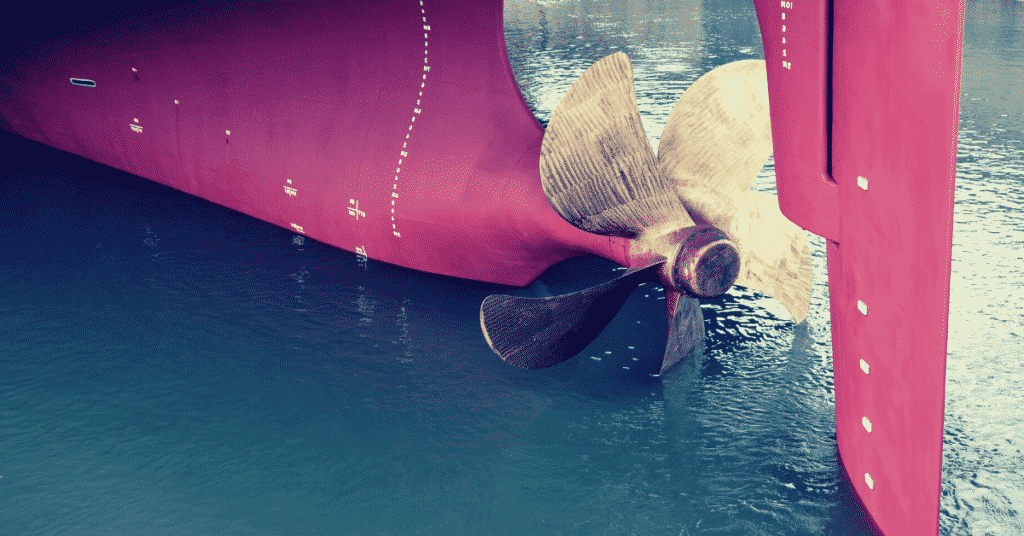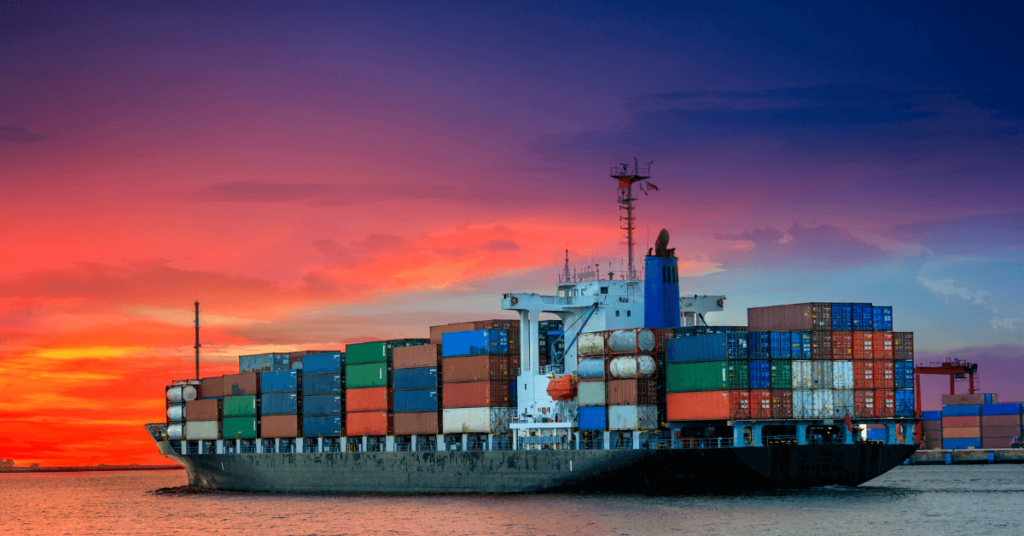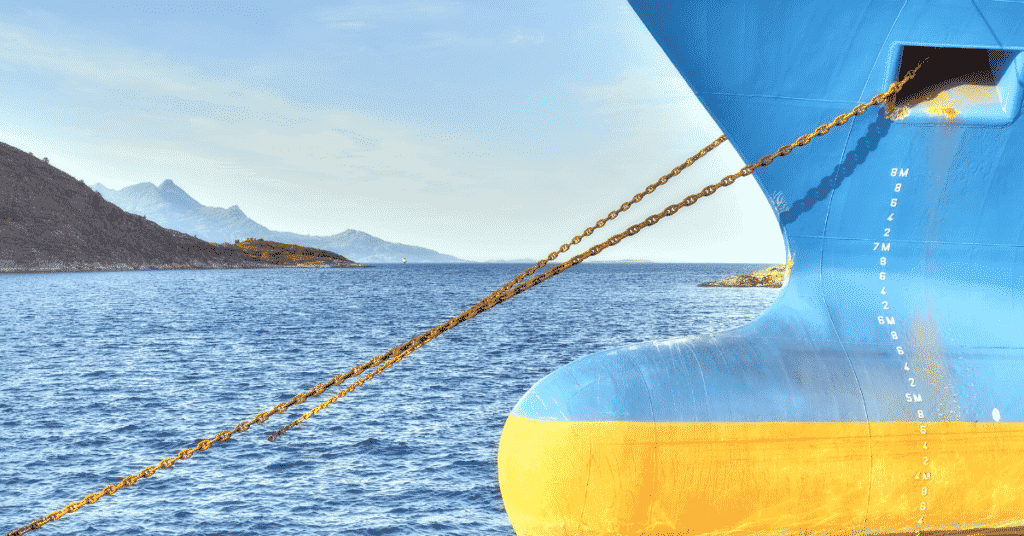What are Draft Lines Of Vessels?
The draft or draught is nothing but the linear measure of the amount of sinkage or submergence of the vessel’s hull in the water. When we say that a vessel has a draft of 10 metres, it essentially means that the depth of the hull submerged in water is 10 metres, or the vertical distance or height from the bottom shell plating to the water level is the same as mentioned.
This quantity differs from the depth, which is the entire vertical height of the hull. The difference between the depth and the draft, essentially the linearly vertical measure of the hull above the water level, is known as the vessel’s freeboard.
The measure of the draft is vital in several ways; the main being a direct relationship with the significant physical parameter displacement, which is nothing but the equivalent weight of the vessel in the water or the volume of water displaced by the hull, which in mass-terms is equal to the buoyant force provided by the water to keep the vessel afloat under the given conditions.
So, as the draft gives a linear measure of the submergence of the hull, it can be directly used as an estimate for displacement. Moreover, it helps the designer understand the extent of submergence of the ship’s hull when afloat. Hence, it also gives a clear picture of the clearance or the vertical distance above the waterline to the main deck level.
Thus, for a given hull depth, the higher the draft, the lesser the freeboard or the safe clearance before flooding the main or exposed deck. However, a high draft doesn’t necessarily mean something to be concerned about.
Most large sea-going cargo vessels have a high degree of the draft due to the cargo carried under fully loaded conditions or even ballasting after offloading cargo.
In other words, the draft is always high for large vessels due to the increased displacement it has to cater to from the first principles of flotation and buoyancy.
The high draft of these vessels offers several advantages in terms of hydrodynamics and stability characteristics. On the other hand, smaller ships in shallow water conditions like rivers or lakes have lower drafts.
Many think that in the early stages of vessel design, along with length and breadth. But though it is essential and always present in any vessel’s basic dimensions, the draft is more important!
When a client gives a requirement for the deadweight or tonnage capacity of a vessel, the designer has a picture of the feasible displacement (deadweight plus lightweight) and plays with the length, breadth, and draft to have the optimum design within the maximum limits of the displacement, adhering to the deadweight requirements, of course, and also maximising the spaces for cargo, accommodations, services, and other utilities.
Once the length, breadth, and draft are fixed in line with the required displacement, the depth is decided based on the type and size of the vessel and other factors like stability. So, in simple terms, the depth of the hull can be finalised only after the designer has confidence in the feasible draft of the vessel.
All vessels have a typical marking on the side of the hull, like a series of parallel branching lines and a circular disc. The numbers are known as draft marks or Plimsoll lines.
A Slice of History
In the 18th and 19th centuries, most vessels were often overloaded than the design capacity. This increased displacement would lead to increased submergence and, consequently, a lower freeboard.
This reduced freeboard beyond design increased the risks of flooding and drowning in seas during rough weather or high wave conditions.
However, towards the end of the 19th century, a coal merchant named Samuel Plimsoll began strongly advocating for a proper signage system that could indicate the draft and freeboard of a vessel under a given condition.
Thanks to his efforts, a signage system began featuring in British vessels and eventually, the rest of the world took the course. The term Plimsoll lines have been credited to his name. Now, all ships inevitably have marked features on their sides indicating the immersion of the hull.
Draft Marks and Plimsoll Lines
Though they are slightly different, Draft Marks and Plimsoll lines are often considered the same. The sole purpose of this set of markings engraved on the sides of a vessel is to indicate the immersion and a picture of when the freeboard becomes less feasible.
During loading and unloading a vessel passage through channels or canals, authorised personnel and crew look at these marks to assess the draft state and ensure that the vessel has a sufficient freeboard under the given loading condition.
Features of the Draft lines
Plimsoll or Load Line Disc: As you may have noticed, there is a circular disc with a horizontal line passing through its centreline with two letters written on both sides. This is known as the Plimsoll Line Disc or load line disc. The diameter of this disc is 300 mm. The alphabets on either side of the circumference are the initials of the classification society under which the vessel is registered right from the new building stage. For example, N-K indicates Class NK, L-R signifies Lloyds’s Register and so on. The geometric centre of this disc coincides with the midship of the vessel. In a horizontal sense, the centre of this disc coincides with the level of the Summer Load Line.
Load Lines: Right at the horizontal separation of 540 mm from the centre of the disc is a set of horizontal mark lines stemming on either side from a single vertical line. These are known as Load Lines. Though there are international conventions and classification guidelines for these marks, they can be explained briefly in simple terms as follows.
Summer Load Line: The horizontal line marked as S, roughly in the middle of this arrangement, lies on the same line as the centre of the plimsoll disc. When the vessel is in a designated ‘Summer Zone’, the vessel’s draft should not rise above this designated level for normal seawater conditions of 1025 kg/cubic metre density.
Tropical Load Line: Immediately above the Summer Load Line is the Line marked T, which is intended for hotter climates in the tropical zone.
Winter Load Line: Right below the Summer Load Line marked as S is the Line drawn as W, which stands for Winter Load Line. Now, we know from the properties of water that it expands with temperature and becomes less dense. So, from the physics of floatation, a higher amount or volume of water needs to be displaced to keep up with the given weight. So, in cold regions or even during the winter, the draft decreases for a given vessel loading as the water becomes denser and contracts.
Winter North Atlantic: The North Atlantic is the coldest waters a vessel can travel on during winter. Not only does the draft decreases further, but also, the sea conditions become pretty rough. The safe margin for drafts to be maintained at this condition is marked as WNA and is the lowest line, around 50 mm below the Winter Load Line. However, from classification regulations, the WNA mark is only present in vessels lesser than 100 m in length.
Fresh Water Line: Again, we know from the physics and chemistry of water that saline water is denser than fresh water. So, for a given vessel and loading, the volume of water that needs to be displaced is higher in freshwater conditions. Thus, when the ship needs to be in freshwater conditions like rivers, canals, lakes, or channels if ever, the draft increases dramatically. Accordingly, the Fresh Water Load Line, marked as F, indicates the safe limits of the maximum draft the vessel is permissible to be on under freshwater conditions.
Tropical Fresh Water: As discussed above, in hotter regions and climates, the drafts increase as well. This phenomenon, combined with the freshwater conditions, further increases the draft, marked as the Tropical Fresh Water Line or TF, the top mark.
Timber Load Lines: For vessels carrying timber or woody cargo, a separate set of lines similar to the normal load lines is also marked. This is because timber or wood is a special cargo type with a low density for a given volume. Thus, the buoyant force is higher, and the drafts are different. The markings are on similar lines, but every mark is preceded by the letter T, standing for Timber.
Draft Markings: In addition to these designated lines, calibrated numbers indicate the exact drafts separately. As expected, they are measured from the bottom to the top as whole numbers in Metres or M, separated by interspersing decimal places marked in steps of 0.2 meters for all practical purposes.
You might also like to read-
- Introduction To Ship Load Lines
- What Is Draft or Draught Of A Ship?
- Understanding Draft Surveys – Importance, Calculations & Errors
- The Gruesome Amoco Cadiz Oil Spill Incident
- A Guide To Plan Stowage On Chemical Tankers
Disclaimer: The authors’ views expressed in this article do not necessarily reflect the views of Marine Insight. Data and charts, if used, in the article have been sourced from available information and have not been authenticated by any statutory authority. The author and Marine Insight do not claim it to be accurate nor accept any responsibility for the same. The views constitute only the opinions and do not constitute any guidelines or recommendations on any course of action to be followed by the reader.
The article or images cannot be reproduced, copied, shared, or used in any form without the permission of the author and Marine Insight.
Do you have info to share with us ? Suggest a correction

About Author
Subhodeep is a Naval Architecture and Ocean Engineering graduate. Interested in the intricacies of marine structures and goal-based design aspects, he is dedicated to sharing and propagation of common technical knowledge within this sector, which, at this very moment, requires a turnabout to flourish back to its old glory.
Latest Naval Arch Articles You Would Like:
Subscribe To Our Newsletters
By subscribing, you agree to our Privacy Policy and may receive occasional deal communications; you can unsubscribe anytime.




